Apr 24, 2023
Fungus Among Us! Inside Smallhold’s Expansion Strategy to Nationwide Distribution
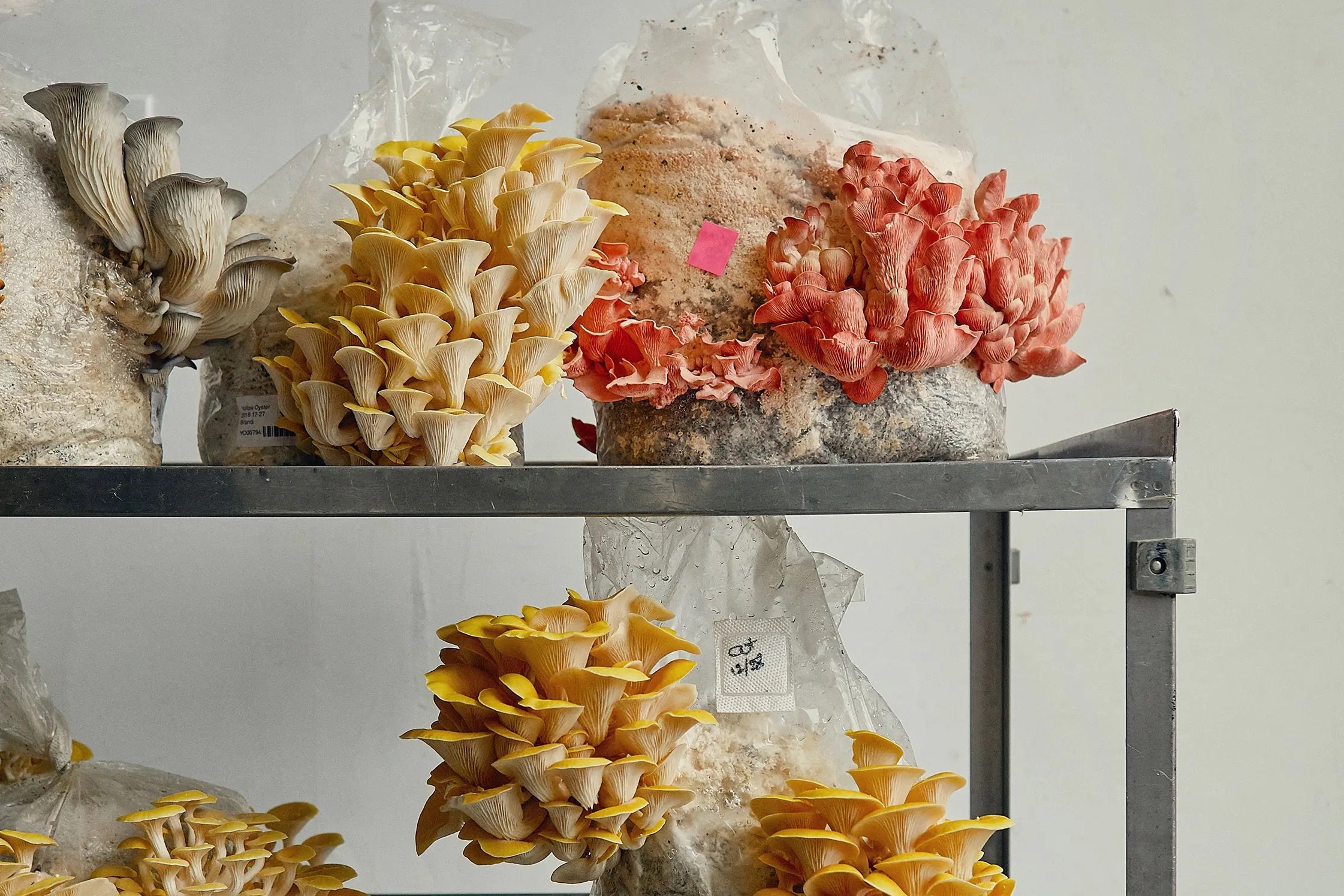
Credit: Colin Hughes.
Written by: Isabelle Dom and Dorothy Braun
April 24, 2023
Since their founding in 2017, Smallhold has seen exponential growth, with their most recent expansion into 192 Sprouts Farmers Markets locations across California, Arizona, and Nevada. Smallhold’s community-oriented mission “to turn every person into a Mushroom Person” has transformed their business from their first farm in Brooklyn to a nationwide hunger for their unique, sustainable, and delicious mushrooms. Agritecture spoke with Smallhold’s Chief Sales Officer, Aurora Porter, and Marketing Director, Abigail Knoff, to gain a “how-to” understanding of their success from working with large grocery retailers.
Expanding into a large retailer is a big decision, and it doesn’t make sense for every company. Why does it make sense for Smallhold? How did y’all arrive at this decision?
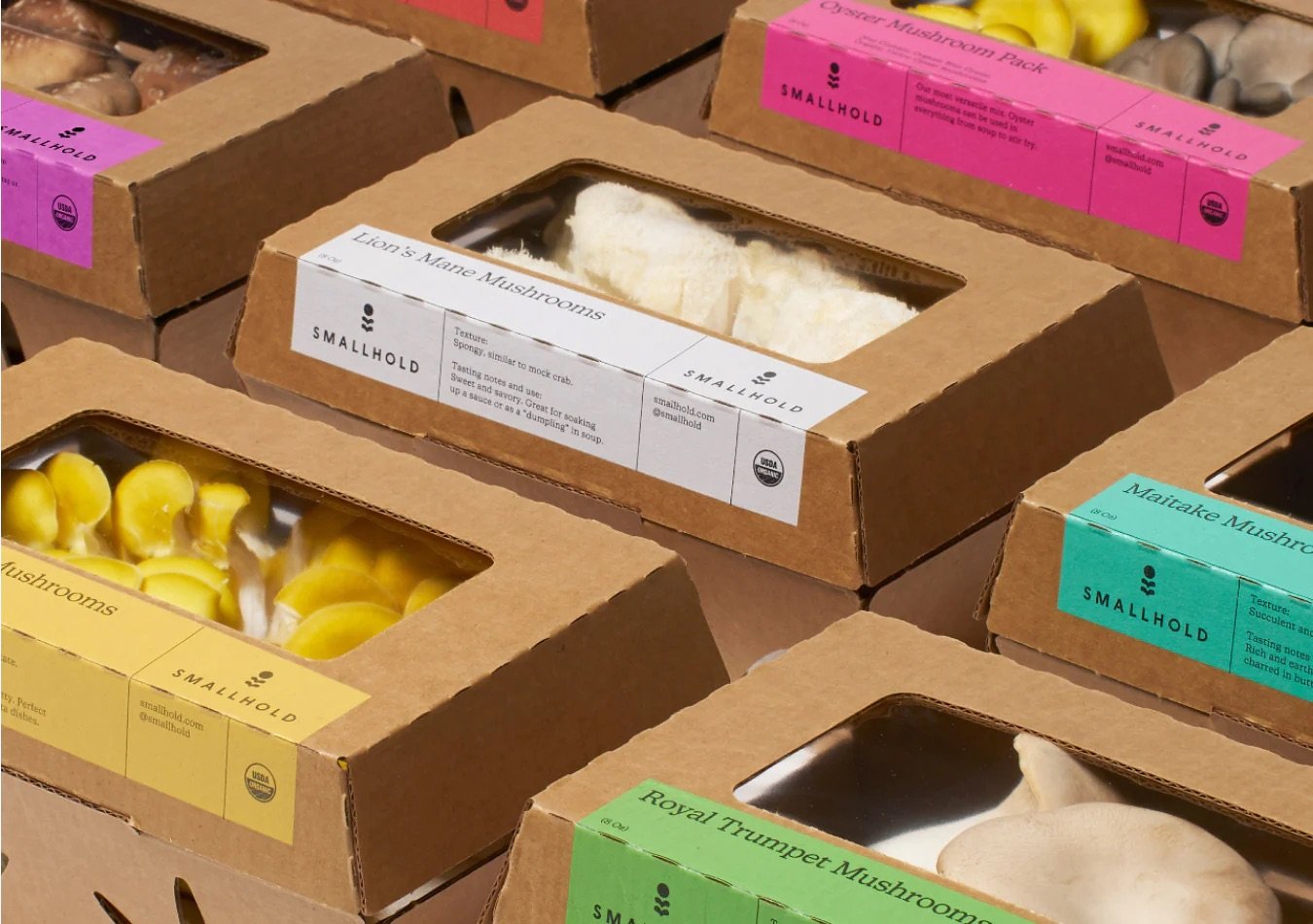
Credit: Smallhold.
AP: Our mission is to change minds with mushrooms – get more people to enjoy them, eat them, and, in general, embrace the whole world of edible fungi that most Americans aren't familiar with. One of the best ways that we've found to get this message across is by putting our brand and our products in front of as many curious, open-minded people as possible. When we start at new retailers, it's an exciting opportunity for us to be able to share new and unique mushroom varieties with the world. As we grow and scale into a larger business, with the right retail partners across the country, it allows us to increase sold capacity at our farm which helps us to attain more sustainable margins. The farms are very sophisticated and tech heavy, it takes a lot of resources and labor to run them, and we have to ensure that it makes financial sense to be operating them at scale.
Now that Smallhold mushrooms can be found in multiple large retailers - what has the process been like for readying the company for each one? What internal benchmarks/milestones did you need to meet first? What (and who) had to come together to make this happen, and what steps were involved in ensuring success?
AP: Most of the consumer packaged goods (CPG) food brands that you see don't actually own and operate their own production facilities, they work with co-packers, or aggregate a lot of different farms to build a larger business. We own and operate our farms, which is a huge investment upfront and then over time we work to sell out those farms. It’s an extremely collaborative venture, and we wouldn’t be able to do any of this growth without each and every department. We have about 90 people on the Smallhold team, including part-time employees, farm workers, and brand ambassadors. From planning, building, execution of the farms themselves to internal engineering and R&D teams, to packaging, marketing, sales, operations, and PR teams, each is such a critical part of the puzzle to create and grow the business.
For the teams involved in the sales process, how are these agreements made? Does Smallhold contact the retailer with a pitch or do they contact you?
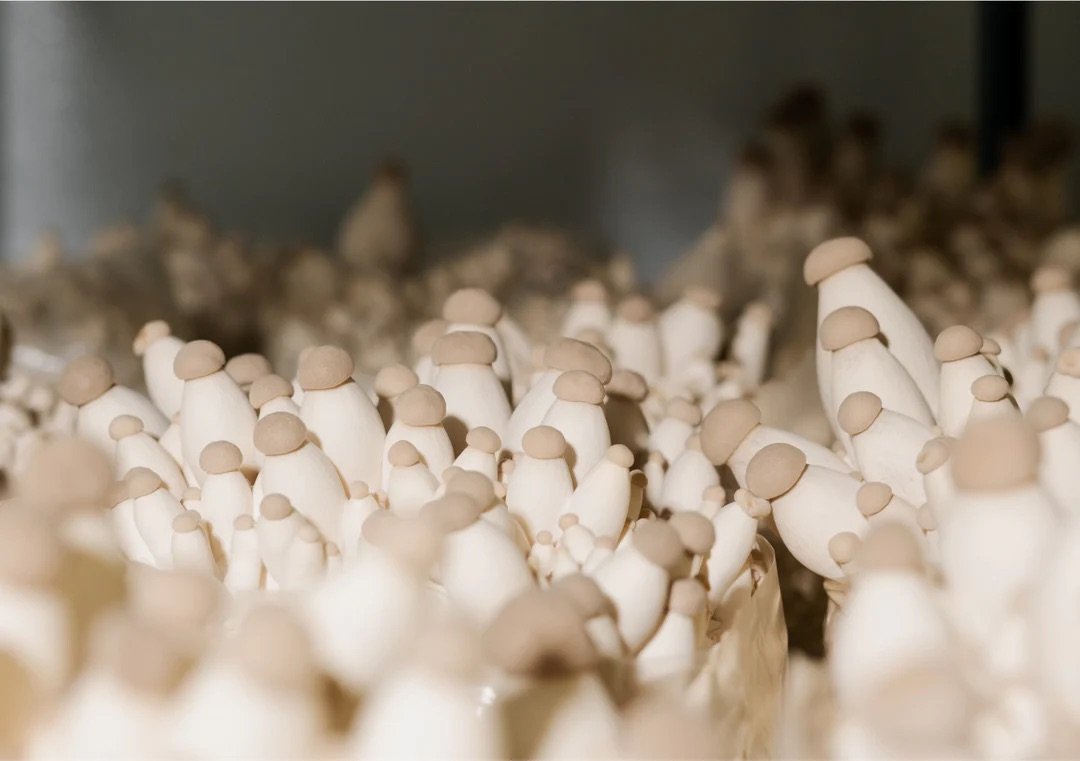
Credit: Smallhold.
AP: In general, it’s us contacting retailers and having very intentional partnerships. We have had a handful of instances where restaurants in particular reach out to us after seeing us on a menu or in a farmers market and request some samples, but mostly our partnerships stem from a mutual appreciation in the industry. We look at the country and target specific regions that make the most sense for us and reach out to retailers that we think we would be a great fit with.
As someone who’s been in the industry as long as you (Aurora) have, I’m sure you came to Smallhold with a network of retailer contacts. Do you have any advice for new businesses on how to do due diligence and find out the right contact point?
AP: There are different buyers for every category in the grocery store, so sometimes it's reaching out to someone you already know and they can help connect with the right person. Often it's just stalking people on LinkedIn or calling a corporate headquarters to find the right person! Sometimes you end up finding the buyer themselves, or you may come across someone who is up on the trends, has heard of you, and is a visionary person in a retailer who is open minded about trying something new.
When you enter the conversation, what is the process like for settling on a sales agreement? Did Smallhold get to dictate any of the terms or are all of the agreements standard practices that you have to adjust to? What does the process look like?
AP: First, I think it's really important as a salesperson or business development person to try to have as many answers to all of these questions in advance before you get in the room with them. It’s best to be as well prepared as possible, to ensure a good deal for everyone. This may look like asking a few questions before you pitch, or reaching out to industry connections who have previously worked with the retailer, or getting advice from a broker beforehand. Getting answers to things such as:
How many stores would you be in?
How many different items would the retailer take?
Which assortment?
Do they work with a distributor or would you go direct?
When you layer in business costs, what are everyone's margins going to look like?
What would associated promo fees look like?

Credit: Zeph Colombatto for Forbes.
All of these factors impact performance and cost, so it will be a negotiation that will depend on who you’re working with. In return, you’ll want to be able to give estimates for profits, margin per SKU, promotional deals, and above all highlight your unique innovations. For us, that’s seen in our beautiful product, beautiful packaging, really strong sustainability story, strong sales history, and the potential to be ‘in their backyard.’ Having these conversations will give all parties a clear sense of expectations, and if the deal is a good thing to move forward with.
As Smallhold was doing the initial planning into expanding into these large retailers, how did you prove the concept to yourselves? How do you phase into these experiences?
AP: I think you always have to prove yourself, regardless of how big you get. Even with ambitious goals, some retailers may still want to start you in a test environment, either a fraction of their total stores, or in a certain region, and that will really determine where you’ll best find success. Starting small and knowing your client demographic is so beneficial in the long term. It’s helpful to have people on your team connected to that business aspect who can be realistic about what it will take to be successful. It’s really about having a deep understanding of what your success looks like – for the retailers and the clients.
What were some of the biggest learning moments for Smallhold during this expansion process?
AP: Produce is hard but exciting. There’s this halo around “fresh,” because Americans are trying to be healthier, eat better, cook at home more, etc. So over the last decade or two, we’ve seen an increase in produce brands, and it's an exciting opportunity to forge new ground and be innovative in the produce world. That said, there are a lot of challenges, most especially short shelf life. However, this creates space for us to do something different, aiming to balance farm capacity with launch strategy, timing all the growth with demand and revenue spend. You have to figure out how to support different types of businesses.
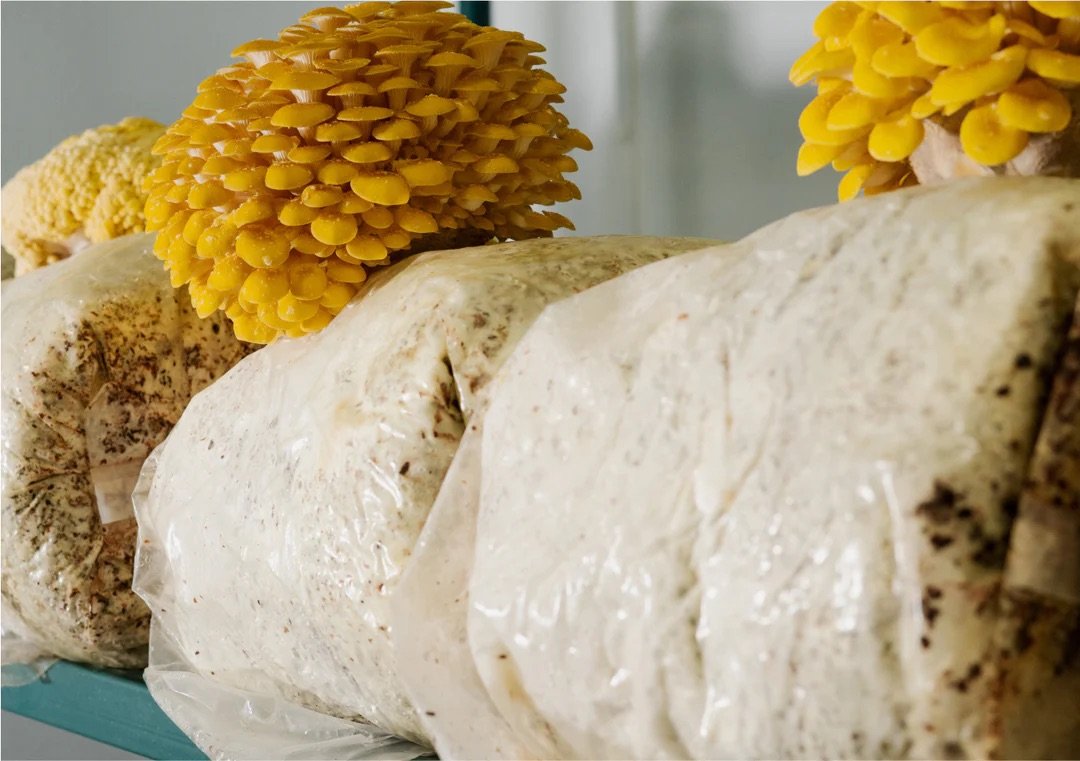
Credit: Smallhold.
How does Smallhold maintain the local, community-oriented identity of your brand? Now that you are nationwide, do you have to adjust your marketing and brand messaging in different regions to get people excited about your products and stores?
AK: Being able to stay true to our original mission and values is very important, and has allowed for a very natural evolution to the brand as we've opened more farms and been in more communities. We lead with community, we lead with education, and maintaining this mission-driven brand is something we will never compromise on. Our whole team is really organically involved with their local urban farming and mycological communities, which are very welcoming and generative. This continues to naturally grow our messaging, and draws in shoppers who gravitate towards similar spaces. Another unique approach is to treat chefs and restaurants like art influencers – they are the people driving those food trends locally within their cities and culinary scenes, and can highlight our product in fun and interesting ways.
The press release focused on the California farm and West coast retailers – how are your Buda and Brooklyn locations going? Are they preparing for similar retail expansions or are the sales strategies different for the different regions?
AP: We have some very exciting launches coming up this summer! As far as indoor farms go, we’re moving pretty quickly – we have plans and goals to sell out in New York and Texas this year, and LA either later this year or early next.
What tips/pieces of advice do you have for any farms looking to work with large retailers?
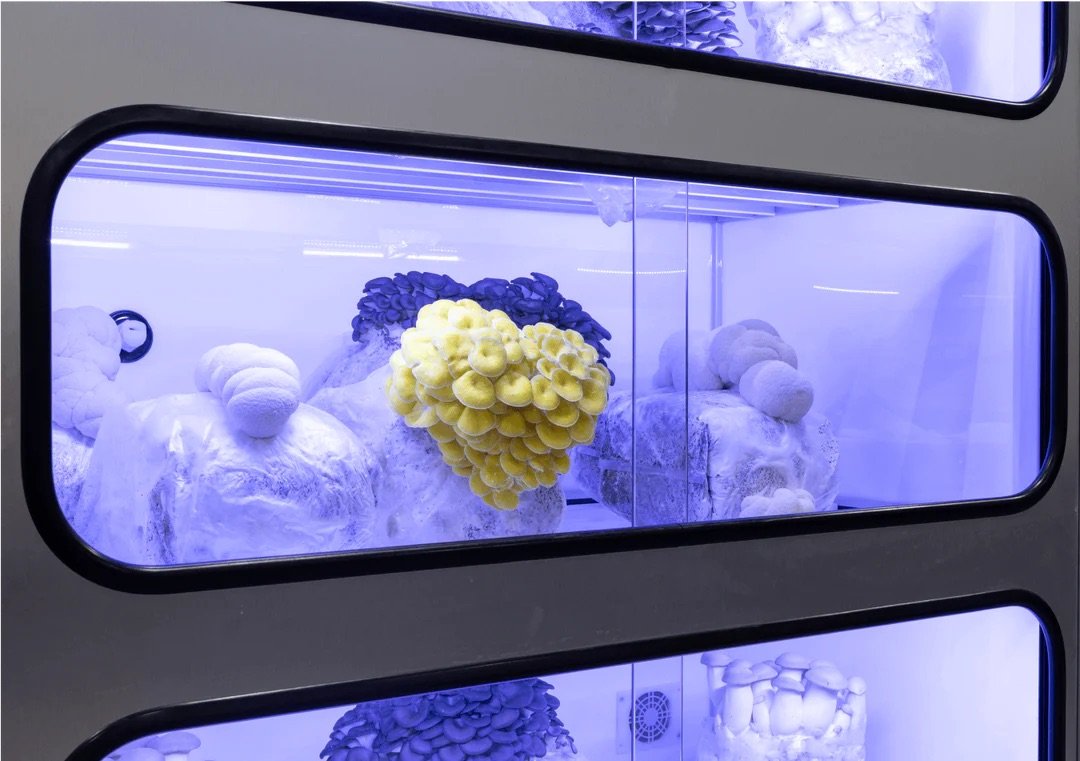
Credit: Smallhold.
AP: If you're farming produce, I think understanding your true capacity is extremely important, making sure that every single department is on the exact same page about what true capacity is. And as you grow, you might realize that concerns or capacity differ by region, or season, or crop. Being adaptable and understanding the internal resources will allow you to support your business long term, which might look like hiring experienced, sales, ops, marketing, finance teams, who can help you make sure of the plan that you're going after. You have to have patience for long-term profitability, which requires negotiation, collaboration, and frequent communication to build really productive business relationships.
Is there anything we didn’t touch on that you’d like to share about this experience?
AP: Smallhold really operates as part of a larger community, not just farmers and restaurants and retailers, but even other companies that might be similar to ours. There's so much information sharing that happens with other indoor ag and produce companies that fosters a really positive, strong community of people. We love to help each other out, big and small, which is a wonderful part of the industry that I appreciate and love to contribute to.
